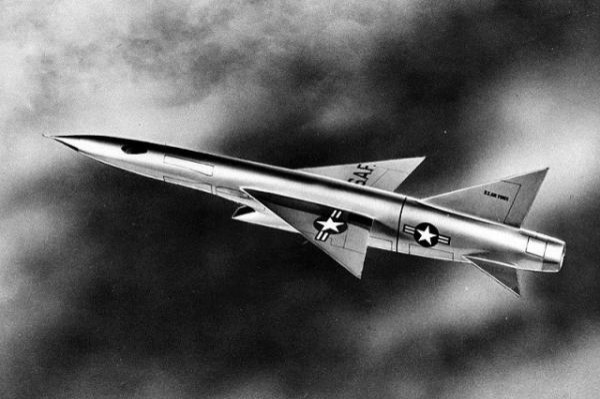10 Most Bizarre Experimental American Aircraft Of The Cold War That Were Never Commissioned Into Military Service
The Cold War ended more than 20 years ago, and with it died some of the strangest aircraft designs and ideas ever to be conceived. Many of the aircraft were tested, but none were ever commissioned, and now most of the prototypes can be found in museums all across America.
Here's a list of the most unusual 10.
10. Northrop XB-35 Flying Wing
The U.S. Army Air Force, as it was then known, asked Northrop, now the Northrop Grumman Corporation (NYSE:NOC), in 1941 for what seemed like an impossibility – an aircraft that could fly 8,000 miles, reach 40,000 feet and carry 10,000 pounds in weight while flying at 250 mph. The first flight took place in 1946 and lasted a mere 45 minutes. By 1947, the two prototypes had been prepared, but after a series of test failures the program was scrapped.
9. The Convair XFY-1 Fighter
This unconventional aircraft, also known as the Pogo, was the only aircraft of its size and weight that was able to take off and land vertically. Originally designed to launch from small warships, the aircraft was difficult to handle as it could not slow down efficiently and would struggle to land on a moving ship.
8. Convair F-2Y Sea Dart
The only seaplane to have traveled beyond the speed of sound, this aircraft was the result of a Navy competition in 1948 to build a supersonic interceptor aircraft. However, in 1954 the only prototype ever made broke up at a press event, killing the pilot in the process. The concept was eventually ditched after better technology was developed.
7. The Vought V-173 Flying Pancake
Perhaps the most unusually shaped of all the aircraft, the Vought V-173 was given the name of the “Flying Pancake” and while it proved an utter failure it did prove that fighter aircraft could take off and land in almost vertical position. But no pilot could get it to fly properly and it was ditched in 1947 after only five years of experimental flight.
6. Convair XF-92
Pitched as an aircraft that could reach 700 mph and reach an altitude of 50,000 feet in four minutes, the Convair lacked real power and few pilots wanted to test it. While it did not function correctly, the aircraft did reach mach 1 under Chuck Yeager and the design became the blueprint for future Convair aircraft in the '60s and '70s. The whole program eventually cost $4.3 million.
5. Convair YB-60 Bomber.
With a length of 171 feet and a wingspan of 206, this huge aircraft was one of the largest in its day, but it was unfortunately unveiled only days before the famous B-52 bomber and was 100 mph slower. Less than eight months after being produced and with only 66 flying hours, the aircraft was scrapped, costing $14.3 million in total.
4. The Ryan X13A-RY Vertijet
While operational requirements did not call for such an aircraft, the Air Force tested this vertical takeoff and vertical landing aircraft in the mid-1950s. It’s unique capability enabled it to hover in a vertical position before transitioning into a horizontal flight mode. It was retired in 1957.
3. Douglas X-3 Fighter Plane
The stunning Stiletto aircraft was designed and built in the 1950s and was supposed to be capable of supersonic speeds but only managed it once in its three and half years as a prototype. Pilots said the aircraft was too powerful on takeoff and underpowered in the air. Design data was later used to create the Lockheed Martin Corporation (NYSE:LMT) F-104 Starfighter’s wing design.
2. The Goodyear Inflatoplane
Twelve of these inflatable aircraft were built between 1955 and 1962 by the Goodyear Aircraft Co. While the aircraft met all of its design specifications, the Army canceled the project, saying it “could be brought down by a well-aimed bow and arrow." Goodyear continued to develop the aircraft well into the 1970s.
1. The XF103-F2 Thunderwarrior Fighter
One of the most striking aircraft ever designed, the Thunderwarrior was canceled at the mockup stage because of engine problems. It would have housed a radar in the nose of the aircraft while missiles would be carried in bays on the sides of the fuselage. The project was canceled in 1957 at a cost of $104 million.

© Copyright IBTimes 2024. All rights reserved.






















